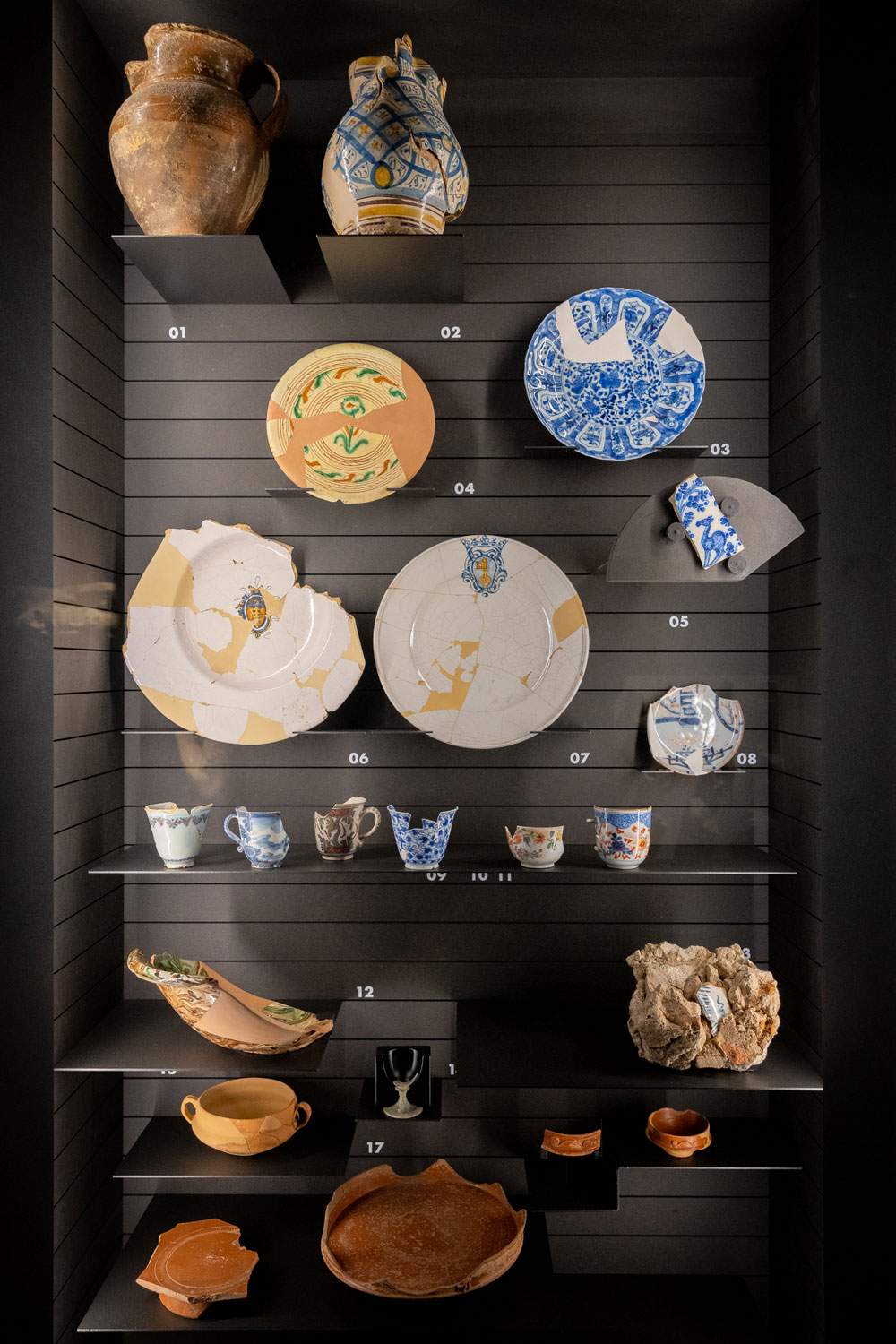New archaeological trail at Palazzo Medici Riccardi opened to the public
Inaugurated the archaeological itinerary of Palazzo Medici Riccardi: it is therefore open to the public, thanks to a large excavation campaign that began in 2012 and was carried out under the high supervision of the Soprintendenza Archeologia, Belle Arti e Paesaggio for the Metropolitan City of Florence and the provinces of Pistoia and Prato, the archaeological heritage recovered in the basement rooms of Michelozzo’s courtyard.
The investigations determined the chronological chaining of seven historical seasons, capable of reconstructing 2,000 years of events: from before the foundation of Roman Florentia to the contemporary age. Portions of masonry structures, floors, foundation conglomerates, wells, drains, stairs, cisterns, as well as numerous artifacts, displayed by theme and chronology, have come to light.
Of particular significance is a portion of theMugnone stream bed, about eight meters wide, within which kitchen and tableware, amphorae for transporting foodstuffs, glass objects, bronze instruments for surgical and cosmetic use, and oil lamps for lighting were found. Dating from the late antique period are the remains of a burial ground with parts of the lower parts of a human body, while an imposing wall structure used as a base for the foundations of the palace was found in close proximity.
Related to the Medici palace are two water wells made of stone slabs and six floor levels, the third level of which can be referred to the stalla magnifica, so named in honor of Lorenzo de’ Medici.
The Riccardi, owners of the palace since 1659, carried out numerous renovations and extensions; in the basement rooms, now a visitor’s route, the new access ramp to the cellars was built.
When it became the property of the Lorraines in 1814, it was used as the seat of administrative offices. In 1874 it was purchased by the Province of Florence to house the provincial offices, the Prefect’s quarters, the Police Headquarters and the Telegraph Office: to this end, new improvements were made that also affected the basement rooms. Here, three hot-air heaters were built in 1875, of which archaeological investigation uncovered the remains of the stove and ducts that channeled cold air from the courtyard that heated up to the upper floors.
In the twentieth century, after World War II, the Tuscan Committee for National Liberation settled in the building. From the rubble used as a “crawl space” (insulating compartment to make a floor) come fragments related to stone plaques from the Ventennio, and the fragments of a marble bust of Victor Emmanuel III, the restoration of which is in progress. Also visible is old electrical equipment dating from the 1960s, a switchboard of the old Florence tramway system.
The excavation campaign was made possible through the efforts of the metropolitan administration and thanks to co-financing from the “Invest in Culture” call for bids issued in 2012 by the Region of Tuscany.
With the museum’s ordinary ticket, it will therefore be possible to visit the new archaeological area, the courtyard, the garden, and the Museum of the Marbles (an extension dating back to 2005 with the collection of sculptures from the classical age formerly belonging to the Riccardi family); on the upper floor, the museum allows visitors to show off its best-known treasures, from Filippo Lippi ’s Madonna and Child to the Luca Giordano Gallery and the Chapel of the Magi frescoed by Benozzo Gozzoli.
For info: www.musefirenze.it
Hours: Daily from 9 a.m. to 7 p.m. Closed Wednesdays.
Tickets: Full 10 (museum + exhibition), reduced 6 euros (museum + exhibition). Free for children under 17.
 |
| New archaeological trail at Palazzo Medici Riccardi opened to the public |
Warning: the translation into English of the original Italian article was created using automatic tools. We undertake to review all articles, but we do not guarantee the total absence of inaccuracies in the translation due to the program. You can find the original by clicking on the ITA button. If you find any mistake,please contact us.



























